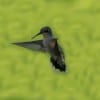 Female hummers lack the colorful gorget you saw on the ruby-throat’s picture and some are quite difficult to tell from other species (such as Black-chinned females). Few birds can hover like hummingbirds and I find it one of the great miracles of Life on Earth that they fly in spring back across the Gulf of Mexico to our shores. In fall, most seem to go around the Gulf as circum-Gulf migrants.
Female hummers lack the colorful gorget you saw on the ruby-throat’s picture and some are quite difficult to tell from other species (such as Black-chinned females). Few birds can hover like hummingbirds and I find it one of the great miracles of Life on Earth that they fly in spring back across the Gulf of Mexico to our shores. In fall, most seem to go around the Gulf as circum-Gulf migrants.
Birding
Jim Stevenson is the Director of the Galveston Ornithological Society:www.galvestonbirders.org You may receive his recent bird pictures name suppressed in PDF form for free by writing him here [email protected]
Birding by Jim Stevenson
Warblers
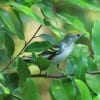 by Jim Stevenson
by Jim Stevenson
The article illustrates ten warblers common in late September and Early October, with some info about them. Enjoy! I am working (literally) night and day on calendar (etc.) orders. I hope to finish this week and get them mailed. IF YOU HAVEN’T SENT ME YOUR ORDER, PLEASE DO SO NOW! Email me at [email protected] Another great
Late September Birds
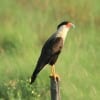 by Jim Stevenson,
by Jim Stevenson,Beautiful Bird Calendars!
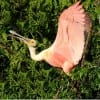 Hi All, we hope you have enjoyed reading about the birds articles by Jim Stevenson. Jim is the executive director of the ornithological society. They are a group of friends of all ages in Galveston County, Texas, who share a love for learning about birds. They have meetings and classes and birding trips like the Water Bird Workshop or Shorebird Seminar. Members have day and overnight field trips to observe birds in
Hi All, we hope you have enjoyed reading about the birds articles by Jim Stevenson. Jim is the executive director of the ornithological society. They are a group of friends of all ages in Galveston County, Texas, who share a love for learning about birds. They have meetings and classes and birding trips like the Water Bird Workshop or Shorebird Seminar. Members have day and overnight field trips to observe birds in
Australia is a colorful place
 by Jim Stevenson,
by Jim Stevenson,
You walk through a dark rain forest and suddenly there’s a brilliant flash of yellow flitting almost in your face. It’s the Lemon-bellied Flycatcher, as much a robin as a flycatcher. With large eyes they pierce the low light and snatch up the tiniest flies with unerring success.
Migrant Seashore Birds
 by Jim Steveson
by Jim Steveson
All you keen birders should enjoy this article as it’s slightly geared for those experienced ones. Liz and I arrived home amidst a cloud of songbird migrants, a larger cloud of mosquitoes, a veritable jungle of vegetation, no A/C (!) and an American Crow near the house. Anyway, I whack weeds today and buy a fogger, the A/C guy just left and we hope
Scenes from the Outback
by Jim Stevenson
Liz and I just emerged from the Outback and before I put together more bird articles, I wanted to show you a few “scenes” of Australia. We flew out the 25th and we should be done with Aussie birds in a couple of weeks.
Parrots of the Outback
Liz and I have begun the long drive back to Cairns, about to cross the famed
Nullarbor Plain. (I wish we had a plane). It’s chilly and a bit rainy but
our spirits are still soaring from a wonderful experience with four species
of albatross. This weeks article is on the rather unlikely group of parrots that reign in Australia. They are amazing in their color, variation and ecology. Enjoy!
Who is sitting on the old gum tree?
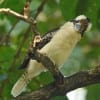 by Jim Stevenson
by Jim Stevenson
Don’t worry, we have lived the day you are about to and it was a good one. 😉 This article is about a few of the primitive birds here in Australia, and a bit about them. Enjoy. Please remember our fall calendar sale, as this one’s our most special. It’s thematic – the best birding areas of Texas and which birds are there. They go on sale right after Labor Day. You can view them here
Aussie Raptors
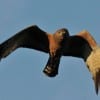
by Jim Stevenson
Liz and I dropped off our clients at the Darwin Airport last night and are now heading off to Western Australia for nearly a month in the Gibson and Great Sandy Deserts, the Nullarbor Plain and coastal WA. We are very excited! We’ve folded down the rear van seats, laid in a perfect-sized
Outback with Jim Stevenson
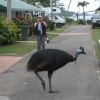 by Jim Stevenson
by Jim Stevenson
Hi Folks,
We just finished sitting at a creek watching two Duck-billed Platypus at sundown, easing down the way. How cool was that! Things are going extremely well our first week, with about 160 life birds for our birders. More over, the bird photography has been wonderful. Tomorrow we leave
The last of Alaska

by Jim Stevenson
In my opinion, some of the best birding in Alaska is at Anchor Point, 15 miles north of Homer, the southern tip of the Kenai Peninsula. With a snow-capped chain of volcanoes behind it, sprawling Cook Inlet runs north to south from Anchorage to Kachemak Bay. This is the halibut fishing capital of
The Arctic needs to be on your bucket list

By Jim Stevenson
Pacific Loons are abundant in the Arctic and are a typically beautiful loon in breeding plumage. Formerly the Arctic Loon, this species was split and the old “Arctic” Loon is now confined to NW Alaska, very difficult to find (and identify). This species shows up annually in the Deep South in very low numbers and they are often in Offat’s Bayou in early spring in Galveston.
Alaska’s Interior
 by Jim Stevenson
by Jim Stevenson
Hi Folks,
After completing a wonderful GOS Alaska tour, Liz and I have driven back into civilization in Fairbanks and are catching up on chores. Here is an article on the birds of Alaska’s Interior, the coldest place imaginable in winter but the warmest part of the State in summer.
Bird Island, Alaska
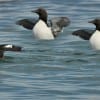 Our first PDF on Alaskan birds is from the southern site of Homer, on a small island many tourists visit.
Our first PDF on Alaskan birds is from the southern site of Homer, on a small island many tourists visit.
Hope you enjoy it!
Targhe National Forest
 by Jim Stephenson
by Jim Stephenson
Targhe National Forest is a huge acreage of mountainous forest in Idaho and states eastward. It has many faces but my favorite areas are wooded canyons, not unlike some of the famous ones we visit in SE Arizona. Birds are that of the Rocky Mountains, with some low areas of sage and intermittent grassland.
A birders tour of Yellowstone

There is nothing grander than Yellowstone National Park. They have about every imaginable formation and phenomenon known to science and amazingly tame animals at every turn.
Idaho Bird Refuge
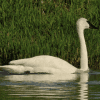 Over halfway up I-15 in eastern Idaho lies one of the jewels of the American West, Camas NWR. It is largely glacially-formed kettle ponds with arid grassland on the edges, so an excellent diversity exists on its wildlife loop. Additionally, many songbirds inhabit the cottonwoods along an old creek bed, albeit ditched. It and Targhe National Forest are great Idaho stops for birders and nature enthusiasts alike, on their way from Utah to Montana.
Over halfway up I-15 in eastern Idaho lies one of the jewels of the American West, Camas NWR. It is largely glacially-formed kettle ponds with arid grassland on the edges, so an excellent diversity exists on its wildlife loop. Additionally, many songbirds inhabit the cottonwoods along an old creek bed, albeit ditched. It and Targhe National Forest are great Idaho stops for birders and nature enthusiasts alike, on their way from Utah to Montana.
Sargassum Birds
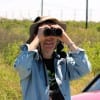 If you have young kids or grandkids, there is nothing more interesting, exciting and educational than wading out into the fresh sargassum washing in and scooping up a few clumps in a pool net, removing the clumps and showing eager eyes the critters left behind that hide within it for thousands of miles. It even beats TV.
If you have young kids or grandkids, there is nothing more interesting, exciting and educational than wading out into the fresh sargassum washing in and scooping up a few clumps in a pool net, removing the clumps and showing eager eyes the critters left behind that hide within it for thousands of miles. It even beats TV.
2300 dead birds found along Chili beach
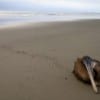 by Jim Stephenson
by Jim Stephenson
Over the past few years, I have seen situation after situation where birds and other animals were in peril because of the rapid warming of our planet. Regardless of your political affiliation, this issue needs to be addressed.Chilean officials are asking fishermen to help save birds caught in nets after thousands of dead fowl appeared along coastal Chile this week.
Spring Migration Birds
 by Jim Stevenson
by Jim Stevenson
We have a huge selection of migrant songbirds each year that cross the Gulf and pass over the Gulf Coast, with a small number of their kind dropping in for rest, food and water. Some are small, like warblers and vireos and small flycatchers, but most are medium-sized birds. Quite a number have vivid coloration. These are the
Birding Activities
 by Jim Stevenson
by Jim Stevenson
We have a few activities planned for those interested. Please contact me below if you’re interested.
Monday, April 30 to Thursday, May 3 will be a second Spring Migration Photo Phantastic, if numbers allow. It will be the same experience as 4/23-26, and will actually have a
Loon hunting in Offat’s Bayou
 by Jim Stevenson
by Jim Stevenson
This essay is on the loons of Offat’s Bayou and a few other birds photographed out there recently. Many thanks to David Hanson who took Liz and I out there, along with his sweet wife, Jan.
Heading Home
 Ed Snyder/Outdoors
Ed Snyder/Outdoors
Bolivar Peninsula, TX.
Thousands of migratory birds are beginning to make that long flight to their northern homes now with hundreds of watchers lining up at Rollover Pass to get their tickets punched and their cameras full of images. For the next month or so just about every feathered species of shore bird will be
Birding on Bolivar
 The area’s bird sanctuaries are full of visitors this time of year (both two-legged and winged) and people come from all over the world to experience the spring migration of hundreds of bird species that travel along the Gulf Coast and beyond as they head northward. Approximately 10,000 people, from all 50 states and a dozen foreign countries, visit the High Island sanctuaries each year. A typical birder can observe
The area’s bird sanctuaries are full of visitors this time of year (both two-legged and winged) and people come from all over the world to experience the spring migration of hundreds of bird species that travel along the Gulf Coast and beyond as they head northward. Approximately 10,000 people, from all 50 states and a dozen foreign countries, visit the High Island sanctuaries each year. A typical birder can observe
UT Student group learns about birding
 Birding is a larger part of our economy than many people realize. For the past six years, Dr. Peter English, lecturer at the University of Texas School of Biological Sciences, has sponsored a group of students and teaching assistants on a trip to Bolivar to learn about birding. This weekend they visited the Bolivar Flats Shorebird Sanctuary, Horseshoe Lake Sanctuary, Johnson Woods, Boy Scout Woods,
Birding is a larger part of our economy than many people realize. For the past six years, Dr. Peter English, lecturer at the University of Texas School of Biological Sciences, has sponsored a group of students and teaching assistants on a trip to Bolivar to learn about birding. This weekend they visited the Bolivar Flats Shorebird Sanctuary, Horseshoe Lake Sanctuary, Johnson Woods, Boy Scout Woods,
Spoonbill Rookery

by Jim Stevenson
The Spoonbill Rookery at High Island is probably the top ornithological attraction in Texas. There are nesting Roseate Spoonbills, Great Egrets, Snowy Egrets, Tri-colored Herons, Little Blue Herons, Neotropical Cormorants and Cattle Egrets. It is owned and managed by Houston Audubon Society, who provides excellent
Nature finds a way

Red-Tailed Hawk
by Jim Stevenson
For centuries, the native Cotton Rat scurried around Galveston Island, nibbling mostly green grass, leaving stashes laying beside runways. A ubiquitous creature of the Deep South, these “hispid” rats form integral parts of the food chain, feeding rodentivores from snakes to hawks.
Galveston and beyond, these prolific

 Posted in
Posted in 























